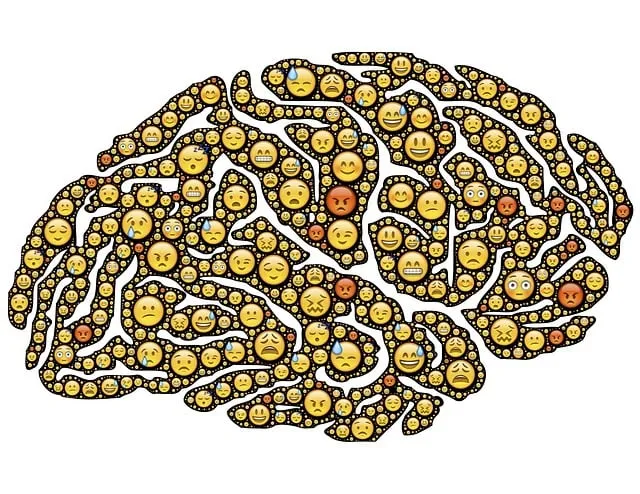Northglenn Kaiser Permanente mental health locations adopt a holistic evaluation strategy for their Mind Over Matter Principles programs, combining qualitative and quantitative methods. This includes patient satisfaction surveys, interviews, and data on attendance, referrals, and treatment adherence to gauge improvements in mental health awareness and anxiety relief. By utilizing pre-post tests, client feedback, community surveys, and focus groups, they assess program effectiveness, identify areas for improvement, and tailor interventions to meet evolving needs. Additionally, quantitative methods like surveys, questionnaires, regression analysis, and chi-square tests provide insights into large-scale trends and correlations in mental health services, ensuring the programs' relevance and accessibility at Northglenn Kaiser Permanente locations and beyond.
Mental wellness program evaluation is crucial for measuring effectiveness and driving improvement at Northglenn Kaiser Permanente mental health locations. This article explores diverse methods used to assess programs, including both quantitative and qualitative approaches. We delve into how surveys, data analysis, client feedback, focus groups, and community input contribute to successful program optimization. By integrating these techniques, Northglenn Kaiser Permanente can enhance service delivery for better mental health outcomes.
- Assessing Program Impact at Northglenn Kaiser Permanente Mental Health Locations
- – Measuring success and identifying areas for improvement
- – Quantitative methods: Surveys, data analysis, and statistical techniques
Assessing Program Impact at Northglenn Kaiser Permanente Mental Health Locations

At Northglenn Kaiser Permanente mental health locations, evaluating program impact goes beyond traditional metrics. The focus is on understanding how Mind Over Matter Principles have translated into tangible improvements in patient lives. This involves qualitative assessments like patient satisfaction surveys and semi-structured interviews to capture personal narratives of change. By delving into these stories, healthcare providers gain insights into the most effective aspects of their programs, whether it’s enhancing Anxiety Relief techniques or fostering a deeper understanding of mental health Awareness.
Quantitative methods also play a crucial role, with data on attendance rates, referral sources, and treatment adherence providing benchmarks for program effectiveness. This dual approach ensures that improvements are both qualitative and quantitative, allowing for comprehensive assessment of the Northglenn Kaiser Permanente mental health locations’ services and their real-world impact on patient well-being.
– Measuring success and identifying areas for improvement

Evaluating the success of mental wellness programs is a multifaceted process, especially at Northglenn Kaiser Permanente mental health locations. It involves assessing both individual client outcomes and broader impacts on the community. By implementing robust evaluation methods, such as pre-post tests, client feedback surveys, and qualitative interviews, program providers can measure improvements in symptoms, coping mechanisms, and overall quality of life for those seeking support. This data provides valuable insights into the effectiveness of various interventions and identifies areas where programs excel or need refinement.
For instance, at Northglenn Kaiser Permanente, a Risk Assessment for Mental Health Professionals could highlight specific challenges faced by clients, guiding future initiatives to address these issues. Additionally, Mental Illness Stigma Reduction Efforts and Public Awareness Campaigns Development can be evaluated through community surveys and focus groups to gauge changes in public perceptions and attitudes towards mental health. This comprehensive evaluation approach ensures that programs remain relevant, accessible, and tailored to the evolving needs of individuals seeking mental wellness support.
– Quantitative methods: Surveys, data analysis, and statistical techniques

Quantitative methods play a pivotal role in evaluating mental wellness programs offered at Northglenn Kaiser Permanente locations and other healthcare facilities. Surveys are a powerful tool to gather data from a large number of participants, providing insights into their experiences, perceptions, and improvements related to mental health services. By administering standardized questionnaires, researchers can employ data analysis techniques to identify trends, patterns, and correlations. Statistical methods, such as regression analysis or chi-square tests, enable a deeper understanding of the program’s impact by comparing outcomes between different groups or time periods.
These quantitative approaches are particularly valuable in measuring specific aspects like stress reduction methods, which is a key focus for many mental wellness initiatives. By analyzing changes in scores over time, researchers can assess the effectiveness of various interventions and programs. Additionally, quantitative data helps in gauging the success of Mental Illness Stigma Reduction Efforts, as surveys can capture shifts in attitudes and perceptions towards mental health among participants.
Evaluating mental wellness programs is crucial for understanding their effectiveness and making informed improvements. The case study of Northglenn Kaiser Permanente mental health locations demonstrates the power of quantitative methods, such as surveys and data analysis, in measuring program impact. By utilizing these tools, healthcare providers can gain valuable insights into participant experiences and identify areas for enhancement, ultimately optimizing care at Northglenn Kaiser Permanente mental health locations and beyond. This data-driven approach ensures that mental wellness programs are tailored to meet the unique needs of their communities.






